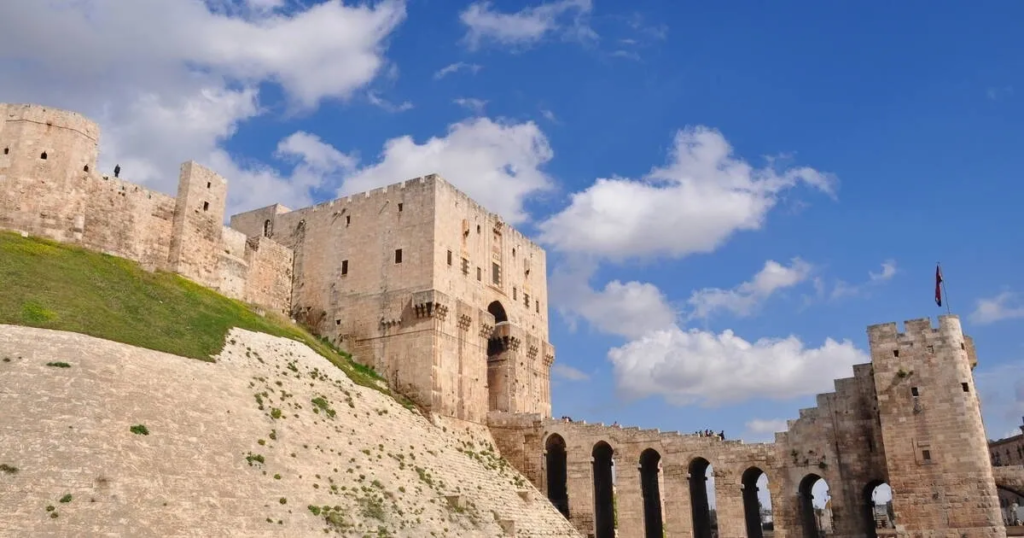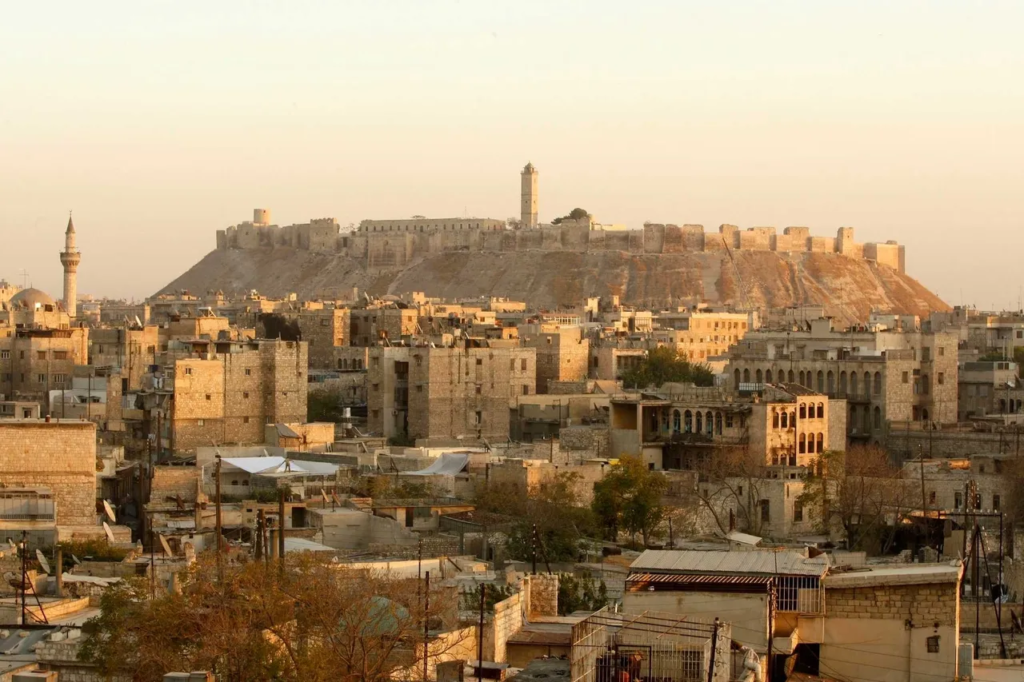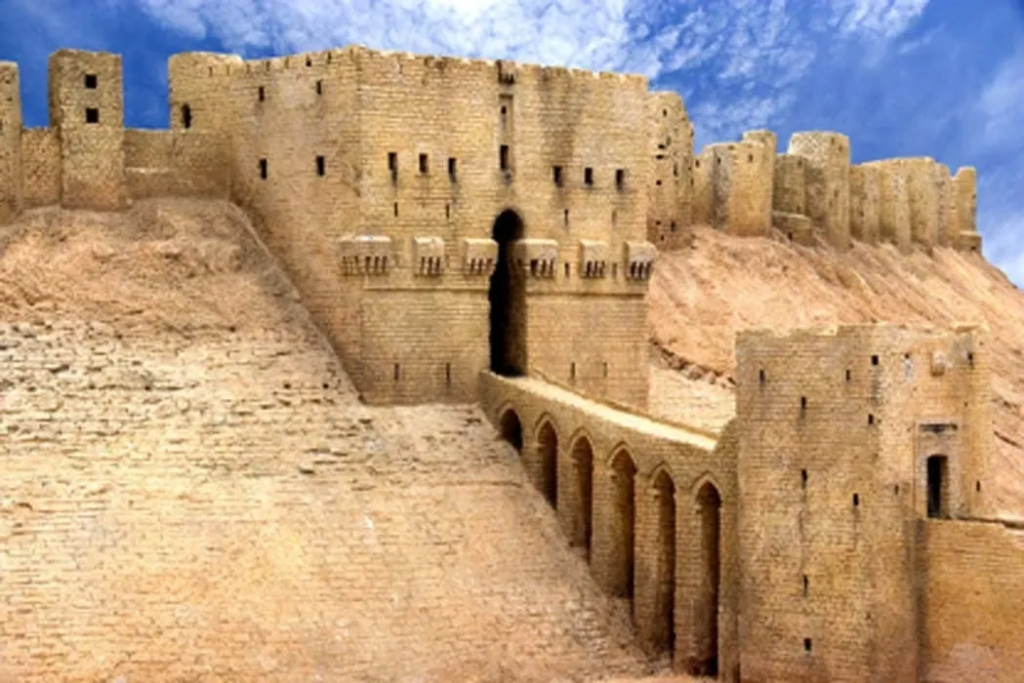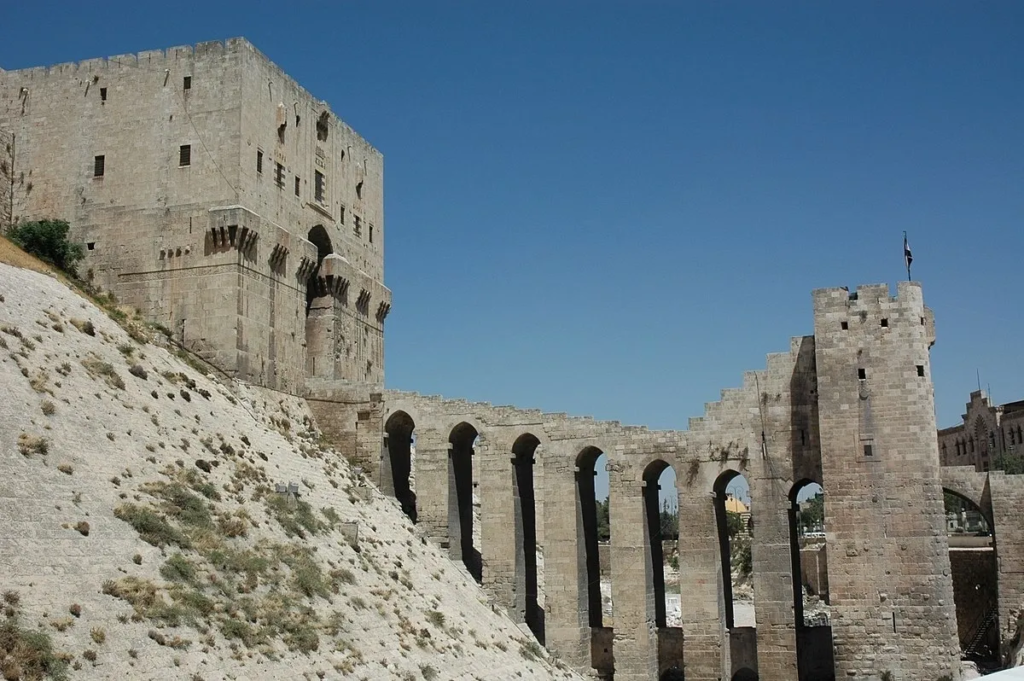Aleppo has an incredibly rich history as a crossroads of cultures. Every historical culture that has existed, from the Greeks and Romans to the Hittites and Assyrians, had a lasting influence on the identity of the city. Aleppo boasts architectural wonders that span centuries, including the formidable Citadel, the majestic Great Mosque, and several other buildings that are testaments to its eclectic legacy. The city is a great trove for visitors, historians, and archaeologists alike because of its capacity to maintain and highlight this diverse tapestry of civilizations.

Aleppo’s Citadel is a reminder of the city’s rich cultural legacy and long history. The ebb and flow of civilizations, from Arab domination in the medieval era to earlier occupancy spanning millennia, have been observed by its ancient walls. The ruins of mosques, palaces, and spas may be found inside its walled boundaries; each one reveals something about Aleppo’s illustrious history. The city that surrounds the citadel is a testament to its varied past; its architecture and design include elements of Greek, Roman, Christian, and Islamic influence. Aleppo’s spirit remains despite time and the changes it has brought about, pulsating through its vibrant marketplaces, meandering streets, and strong neighborhoods, guaranteeing its status as a treasured and unique gem of human history.

Aleppo’s historic urban landscape bears witness to the diverse civilizations that have influenced its past. Its architectural tapestry has been permanently impacted by the footprints of the Hittites, Greeks, Romans, Byzantines, and Ayyubids over the ages. A classic example of this fusion, the Citadel is an imposing presence on the skyline, with components from the Hittite, Hellenistic, Roman, Byzantine, and Ayyubid periods. You come across a kaleidoscope of buildings from various eras as you go through the winding lanes. The Umayyads built the Great Mosque, which was renovated in the 12th century and still bears witness to the city’s Islamic past.


Aleppo is acknowledged by Criterion (iv) as a superb illustration of an Ayyubid city from the 12th century, set apart by its impressive military architecture that emerged following Salah El-Din’s victory against the Crusaders. The city’s defensive system, which includes a protective ditch, an encircling wall, and towering entrances with machicolations and other defensive devices, is the pinnacle of Arab military architecture. Further examples of this era’s inventiveness in architecture include buildings from the 13th and 14th centuries that are towering fortresses and stone entrance bridges. The historical significance of the region is further enhanced by the existence of many mosques inside the city limits, most notably the Madrasah al Firdows, which was built in 1235 by Daifa Khatoun.

Despite the Citadel’s ongoing significance, new urban interventions have prompted worries about the preservation of Aleppo’s visual integrity. One such intervention is the construction of an eight-story hotel in the Bab al-Faraj district. Preceding actions that occurred before the region was named a heritage site have also presented difficulties in preserving the cohesion and historical authenticity of the city. In order to preserve Aleppo’s cultural legacy, coordinated actions are necessary to reduce risks to the city’s infrastructure and the remaining historical artifacts, guaranteeing their preservation and passing on to future generations. Maintaining the city’s standing as a notable symbol of human history and culture requires such initiatives.

The ancient city of Aleppo, which is centered on the Citadel, has mostly maintained its original design since it was inscribed as a UNESCO World Heritage Site. Positive outcomes from conservation initiatives have preserved its Outstanding Universal Value by protecting its unique traits. However, there are significant dangers associated with the region due to insufficient planning regulations, including the lack of a buffer zone. Notwithstanding these obstacles, conventional trades and commerce continue, highlighting Aleppo’s urban life’s lasting vitality.

The Antiquities Law, which is overseen by the Directorate of Antiquities and Museums, offers legal protection to guarantee the site’s preservation. Furthermore, in 1992 the Rehabilitation Project for Old Aleppo was launched as a result of joint efforts by the Municipality of Aleppo and foreign partners. Then, in 1999, the Old City Directorate was formed, with divisions handling planning, permission, monitoring, and execution in addition to directing restoration work. A comprehensive plan is now being developed for the future development of the city, with oversight from the Old City Directorate. This plan is part of the larger “Programme for Sustainable Urban Development in Syria,” a collaborative effort between foreign organizations and Syrian government entities.

While creating a thorough conservation management plan, it is essential to keep traditional conservation methods front and center in order to preserve the integrity of the site. This plan should include guidelines for upcoming construction, such as restrictions on the amount of height and density allowed in specific locations. It should also include guidelines for protecting any archeological sites that are discovered while building is being done. Protecting the site’s coherence and historical value also requires the creation of a buffer zone and the application of relevant planning restrictions.